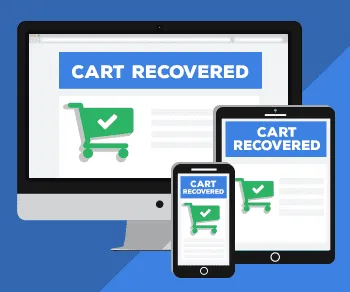In e – commerce marketplace, abandoned carts are a common headache. However, with the right tactics, you can turn these potential losses into sales and reduce abandoned cart recovery. Here are 16 strategies to help you reduce abandoned cart recovery and increase your revenue.

I. Simplify the Checkout Process
1. Streamlined Flow: Keep the checkout process as short as possible. Aim for no more than 3 – 4 steps. For example, combine the shipping and billing information steps if the majority of your customers have the same address for both. This reduces the time and effort required from the customer.
2. One – Page Checkout: Consider implementing a one – page checkout. All the necessary information, like shipping details, payment options, and order summary, is presented on a single page. This gives customers a clear overview and speeds up the process.
3. No Account Required: Offer a guest checkout option. Many customers are reluctant to create an account just to make a purchase. By allowing them to check out as guests, you remove this barrier. For instance, a busy professional might not have the time to fill out a long registration form and will appreciate the convenience.
II. Provide Clear Information
4. Up – front Costs: Display shipping costs clearly on the product page or at least before the customer reaches the checkout. Hidden costs are a major reason for cart abandonment. Let customers know if there are any free – shipping thresholds or if expedited shipping is available and at what cost.
5. Delivery Times: Share estimated delivery times. Customers want to know when they can expect their products. A statement like “Most orders are delivered within 3 – 5 business days” can set proper expectations.
6. Diverse Choices: Offer a wide range of payment options. Include popular methods like credit/debit cards, PayPal, and digital wallets such as Apple Pay and Google Pay. Different customers have different preferences, and catering to them can increase the likelihood of a purchase.
7. Payment Security Assurance: Display trust badges and security seals to assure customers that their payment information is safe. A small padlock icon or a logo from a well – known security provider can go a long way in building trust.
III. Use Reminder Emails
8. Immediate Follow – up: Send an abandoned cart reminder email within 1 – 2 hours of the cart being abandoned. This catches the customer while they’re still likely to be thinking about the items. For example, if they were interrupted during the checkout process, a quick reminder can prompt them to finish.
9. Subsequent Reminders: Send additional reminders at strategic intervals. A second email after 24 hours and a third after 48 hours can also be effective. But make sure not to over – email, as this can be annoying.
10. Mention Abandoned Items: In the email, list the items the customer left in their cart. Include high – quality images of the products. This visual reminder can reignite their interest. For instance, if they abandoned a new pair of shoes, show a picture of the shoes from different angles.
11. Offer Incentives: Provide an incentive to complete the purchase. It could be a discount code, free shipping, or a free gift. A simple “Use code SAVE10 to get 10% off your abandoned cart items” can be very persuasive.
IV. Optimize Mobile Experience
12. Seamless on All Devices: Ensure your website is fully responsive. It should look and function well on mobile phones, tablets, and desktops. Since a large number of eOmni-channel E-commerce Platform: Elevating Customer Service – commerce transactions now occur on mobile devices, a poor mobile experience can lead to cart abandonment.
13. Touch – friendly Interface: Make sure buttons and links are large enough for easy tapping on mobile screens. The checkout process should be easy to navigate with a finger, without the need for precise clicks.
14. Auto – fill Information: Use mobile – specific features like auto – fill for contact and payment information. This saves time for customers, especially on smaller screens where typing can be cumbersome. For example, if a customer has saved their payment details in their mobile wallet, the app can auto – fill this information during checkout.

V. Build Trust
15. Display Reviews: Show customer reviews prominently on the product page. Positive reviews build trust and can influence hesitant customers. For example, if a customer is on the fence about buying a new laptop, seeing reviews from satisfied users can tip the scales.
16. Average Rating: Include an average rating, such as a 4 – star out of 5, to give customers a quick overview of the product’s quality.
17. Visible Policies: Make your security and privacy policies easily accessible. Place links to these policies at the bottom of every page. Let customers know how you protect their personal and payment information.
18. Transparency: Be transparent about how you use customer data. For example, state that you will not share their information with third – parties without their consent.
VI. Offer Live Chat Support
19. 24/7 or Extended Hours: Provide live chat support during peak shopping hours or even 24/7 if possible. This allows customers to get immediate answers to their questions. For example, if a customer is unsure about a product’s size while in the checkout process, they can quickly get an answer.
20. Chatbot Backup: Use a chatbot to handle basic questions outside of regular support hours. The chatbot can be programmed to answer frequently asked questions about shipping, returns, etc.
21. Cart – specific Deals: Offer exclusive deals for the items in the abandoned cart. This makes the customer feel special. For example, “As a special offer for leaving items in your cart, we’re giving you a free accessory with your purchase.”
VII. Analyze and Improve
22. Collect Data: Use analytics tools to track why customers abandon their carts. This could be due to high shipping costs, a complex checkout process, or a lack of payment options. Analyze the data to identify trends.
23. Customer Surveys: Send surveys to customers who abandon their carts. Ask them directly why they left. This can provide valuable insights that analytics may not capture.
24. Implement Changes: Based on the data and feedback, make changes to your website and checkout process. If customers are complaining about high shipping costs, consider adjusting your shipping rates or offering more free – shipping options.
25. A/B Testing: Conduct A/B testing on different elements of the checkout process. Test different layouts, button colors, or incentive offers to see what works best in reducing cart abandonment.

By implementing these 16 tactics, you can significantly reduce abandoned cart recovery and boost your e – commerce sales. Remember, it’s all about understanding your customers’ needs and making the purchasing process as smooth and appealing as possible.
You can also read:
Omni-channel E-commerce Platform: Elevating Customer Service




